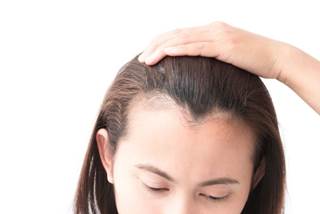
Primary study outcomes were the development of alopecia areata in the cohort exposed to depression and the development of major depressive disorder in the cohort exposed to alopecia.
Major depressive disorder and alopecia areata have a strong bidirectional association, according to a study published in JAMA Dermatology.
The investigators of this population-based retrospective study sought to assess the bidirectional relationship of major depressive disorder and alopecia areata by establishing clinical temporality between these diseases.
The study investigators extracted data on approximately 12 million patients, aged 10 to 90 years, from a registry of general practices in the United Kingdom between January 1986 to May 2012. Risk for alopecia areata was assessed in a cohort of patients with incident major depressive disorder (n=405,339) and in a reference general population cohort (n=5,738,596). Risk for major depressive disorder was assessed in a cohort of patients with incident alopecia areata (n=6861) and in a reference general population cohort (n=6,137,342).
Primary study outcomes were the development of alopecia areata in the cohort exposed to depression and the development of major depressive disorder in the cohort exposed to alopecia.
Analyzing for risk of alopecia areata, 662 patients (0.2%) in the major depressive disorder cohort developed alopecia vs 6356 patients (0.1%) in the reference cohort. After adjusting for variables, a diagnosis of major depressive disorder was associated with increased risk of subsequently developing alopecia areata by 90% (hazard ratio [HR] 1.90; 95% CI, 1.67-2.15; P <.001). Demonstrated by lower incident ratios in both cohorts, antidepressant use showed a protective effect on the risk for alopecia areata (HR 0.57; 95% CI, 0.53-0.62; P <.001). Analyzing for risk of major depressive disorder, 513 patients (7.5%) in the alopecia areata cohort developed depression vs 405,102 patients (6.6%) in the reference cohort. After adjusting for variables, incident alopecia areata was associated with the risk of subsequently developing major depressive disorder by 34% (HR 1.34; 95% CI, 1.23-1.46; P <.001).
Limitations to study included the possible misclassification of major depressive disorder or alopecia areata and potential confounding factors not considered in the study.
Through reciprocal analysis of major depressive disorder and alopecia areata, the investigators discovered a bidirectional association between the 2 diseases in which the incidence of major depression imposed a significant risk for the subsequent development of alopecia areata. Additional evidence of these findings was supported by the association of antidepressant use with reduced alopecia risk compared with not taking antidepressants.
Reference
Vallerand IA, Lewinson RT, Parsons LM, et al. Assessment of a bidirectional association between major depressive disorder and alopecia areata [published online January 16, 2019]. JAMA Dermatol. doi: 10.1001/jamadermatol.2018.4398